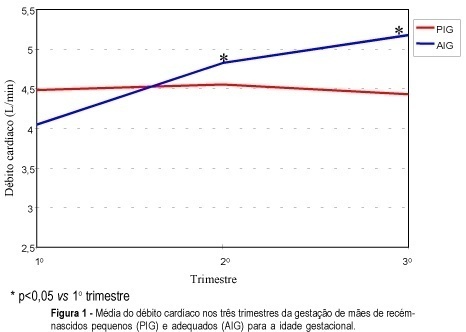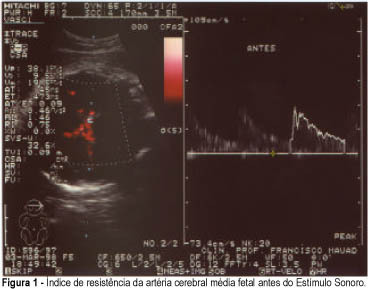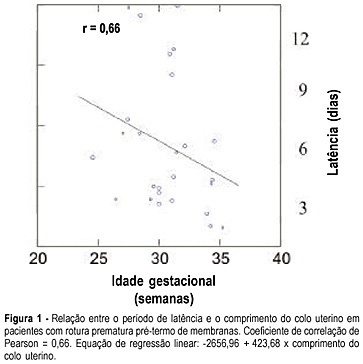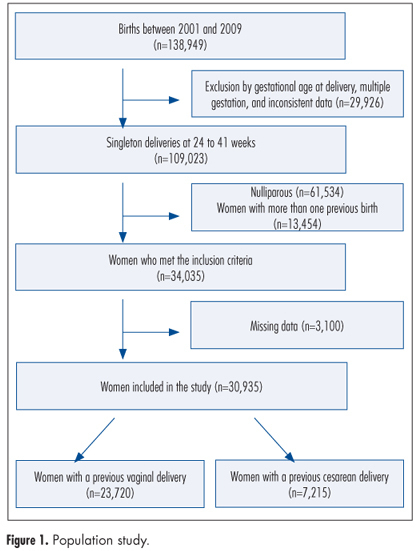Summary
Revista Brasileira de Ginecologia e Obstetrícia. 2007;29(3):147-152
DOI 10.1590/S0100-72032007000300006
PURPOSE: to evaluate the vascular blood flow of the central retinal arteries using dopplervelocimetry in the different phases of the ovulatory menstrual cycle. METHODS: we performed an observational, longitudinal and prospective study evaluating 34 healthy and ovulatory women. All women were submitted to Doppler scan of the eye to evaluate the vascular resistance of the central retinal arteries, either lying down or on a seated position, during four phases of the menstrual cycle. Confirmation of ovulation was performed by measuring serum progesterone during the luteal phase. We analyzed the pulsatility and resistance index and the maximum, minimum and mean velocity. RESULTS: mean age was 29.7 years. No differences were observed between the indexes obtained in both eyes, therefore a mean index was used for comparisons. As the comparison between the positions used for the exams showed a higher PI for the seated position, the analyses were performed separately. The pulsatility index in the lying position was different among the different phases of the menstrual cycle. The arterial resistance was significantly lower during the intermediate follicular and the periovulatory phases, as compared to the early follicular and luteal phases. When the comparison was performed with the patient in the seated position, no differences were observed. CONCLUSIONS: Our results demonstrate a reduction in the vascular resistance of the cerebral microcirculation and a posterior reversal, as shown by changes in the PI.
Summary
Revista Brasileira de Ginecologia e Obstetrícia. 2001;23(3):147-151
DOI 10.1590/S0100-72032001000300003
Purpose: to evaluate maternal hemodynamic and cardiac structural changes during the three trimesters of pregnancy and to relate them to the weight/gestational age of the newborn. Methods: twenty-two healthy pregnant women were submitted to echocardiography for the study of cardiac output, mean arterial pressure, left atrium diameter, and peripheral resistance during three periods of pregnancy, i.e., before the 12th week and at the 26thand 36th weeks of pregnancy. Seventeen pregnant women gave birth to infants with adequate weight for gestational age, four gave birth to small for gestational age newborns and one gave birth to a large for gestational age infant. Results: among mothers of low weight newborns, cardiac output and left atrium diameter remained constant, mean arterial pressure showed a tendency to increase and peripheral resistance was significantly increased (28%), during the gestation. Among the mothers of adequate weight newborns there was an increase in cardiac output of 19% in the second trimester and 8% in the third. The left atrial diameter increased approximately 9% during the gestation, with maintenance of mean arterial pressure and a tendency to a decrease in peripheral resistance. Conclusion: the present results support an association between hemodynamic adaptation and weight newborn.

Summary
Revista Brasileira de Ginecologia e Obstetrícia. 1999;21(3):147-152
DOI 10.1590/S0100-72031999000300005
Purpose: to determine the possible occurrence of hemodynamic changes in the middle cerebral artery of the fetus (MCA) using color doppler after vibro-acoustic stimulation. Methods: thirty fetuses from pregnant women considered to be clinically normal, with a gestational age of 28 weeks or more were submitted to vibro-acoustic stimulation. We examined the changes in blood flow rate in the middle cerebral artery of the fetus on the basis of resistance index (RI) and fetal heart rate (FHR) by color doppler before and after the sound stimulus. Results: mean FHR before vibro-acoustic stimulation was 142.41 beats per minute (bpm) with a standard deviation of 9.01 and a range of 122 to 162 bpm. After stimulation, mean FHR was 159.44 bpm with a standard deviation of 15.49 and a range of 130 to 187 bpm (p<0.01). Mean RI in the MCA of the fetuses was 75.89% (range: 64 to 91%) before the experiment. After the vibro-acoustic stimulation, mean RI was 66.93% (range: 47 to 83%; p < 0.01). Conclusions: we observed that a sound stimulus provokes the well-known immediate and significant elevation of FHR and a decrease in cerebral vascular resistance when evaluated by the RI of the fetal middle cerebral artery.

Summary
Revista Brasileira de Ginecologia e Obstetrícia. 2003;25(3):147-147
Summary
Revista Brasileira de Ginecologia e Obstetrícia. 2019;41(3):147-154
The objective of the present study was to explore obstetric management in relation to clinical, maternal and child health outcomes by using the Robson classification system.
Data was collected from obstetrics registries in tertiary care hospitals in Dubai, United Arab Emirates (UAE).
The analysis of > 5,400 deliveries (60% of all the deliveries in 2016) in major maternity hospitals in Dubai showed that groups 5, 8 and 9 of Robson’s classification were the largest contributors to the overall cesarean section (CS) rate and accounted for 30% of the total CS rate. The results indicate that labor was spontaneous in 2,221 (45%) of the women and was augmented or induced in almost 1,634 cases (33%). The birth indication rate was of 64% for normal vaginal delivery, of 24% for emergency CS, and of 9% for elective CS.The rate of vaginal birth after cesarean was 261(6%), the rate of external cephalic version was 28 (0.7%), and the rate of induction was 1,168 (21.4%). The prevalence of the overall Cesarean section was 33%; with majority (53.5%) of it being repeated Cesarean section.
The CS rate in the United Arab Emirates (UAE) is higher than the global average rate and than the average rate in Asia, which highlights the need for more education of pregnant women and of their physicians in order to promote vaginal birth. A proper planning is needed to reduce the number of CSs in nulliparous women in order to prevent repeated CSs in the future. Monitoring both CS rates and outcomes is essential to ensure that policies, practices, and actions for the optimization of the utilization of CS lead to improved maternal and infant outcomes.

Summary
Revista Brasileira de Ginecologia e Obstetrícia. 2004;26(2):147-151
DOI 10.1590/S0100-72032004000200010
PURPOSE: to assess the length of the uterine cervix by transvaginal ultrasonography in pregnant women with preterm premature rupture of membranes. METHODS: the study group (Ge) consisted of 26 pregnant women with gestational age between 24 and 36 weeks and the control group (Gc) of 49 clinically normal patients at the same gestational age. The patients were evaluated between the 24th to 28th, 28th to 32th and 32th to 36th weeks. The groups were divided into subgroups Ge24-28, Ge28-32, Ge32-36 and Gc24-28, Gc28-32, Gc32-36, according to the study or control group. The cervix length was measured by transvaginal ultrasonography as the linear distance between the internal and external cervical os. RESULTS: we observed significant differences in cervix length between Ge24-28 and Gc24-28 groups whose values were, respectively, 24.3 and 33.0 mm (p=0.04), and between Ge32-36 and Gc32-36, 20.1 and 28.0 mm, respectively (p=0.005). The latency periods of Ge24-28, Ge28-32 and Ge32-36 were, respectively, seven, five and three days, showing a positive correlation with cervix length (r=0.66) and a negative correlation with gestational age (r=-0.27). CONCLUSIONS: the length of the uterine cervix varied with the gestational age when premature preterm rupture of the membranes was detected, with the length being shorter in the study group than in the control group betweeen the 24th and 28th and 32th and 36th weeks. In addition, it was demonstrated that, the shorter the cervix length, the shorter the latency time, with a reduction in the latency period with increasing gestational age at the time of rupture.

Summary
Revista Brasileira de Ginecologia e Obstetrícia. 2013;35(4):148-152
DOI 10.1590/S0100-72032013000400003
PURPOSE: To examine obstetric outcomes in the second birth of women who had undergone a previous cesarean delivery. METHODS: This was a large hospital-based retrospective cohort study. We included pregnant women who had a previous delivery (vaginal or cesarean) attending their second birth from 2001 to 2009. Main inclusion criteria were singleton pregnancies and delivery between a gestation of 24 and 41 weeks. Two cohorts were selected, being women with a previous cesarean delivery (n=7,215) and those with a vaginal one (n=23,720). Both groups were compared and logistic regression was performed to adjust for confounding variables. The obstetric outcomes included uterine rupture, placenta previa, and placental-related complications such as placental abruption, preeclampsia, and spontaneous preterm delivery. RESULTS: Women with previous cesarean delivery were more likely to have adverse outcomes such as uterine rupture (OR=12.4, 95%CI 6.8-22.3), placental abruption (OR=1.4, 95%CI 1.1-2.1), preeclampsia (OR=1.4, 95%CI 1.2-1.6), and spontaneous preterm delivery (OR=1.4, 95%CI 1.1-1.7). CONCLUSIONS: Individuals with previous cesarean section have adverse obstetric outcomes in the subsequent pregnancy, including uterine rupture, and placental-related disorders such as preeclampsia, spontaneous preterm delivery, and placental abruption.

Summary
Revista Brasileira de Ginecologia e Obstetrícia. 2021;43(2):148-149